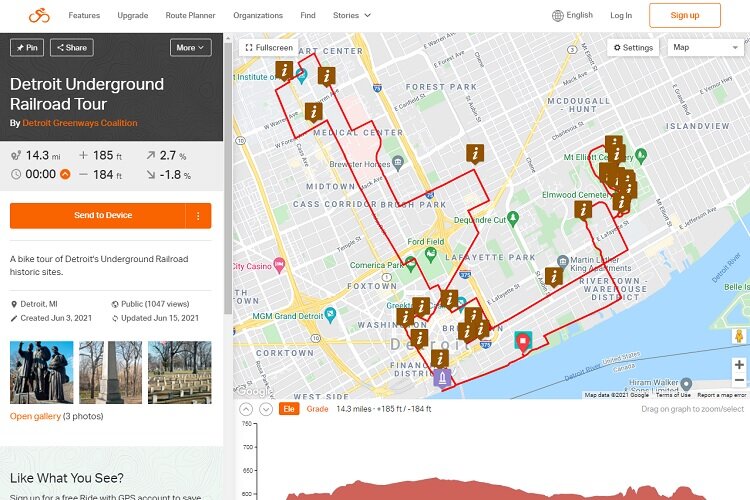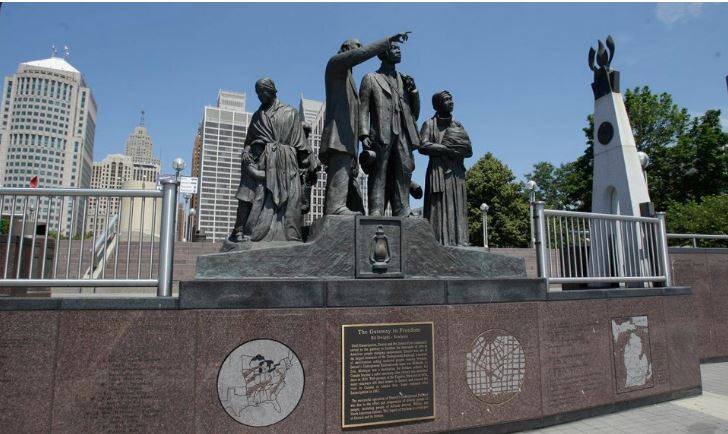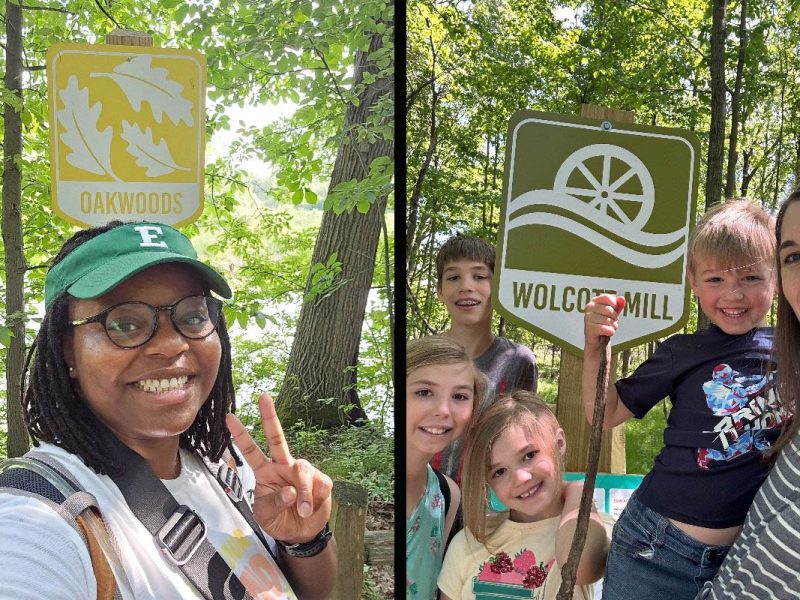Detroit Greenways Coalition launches virtual bike tour of Detroit Underground Railroad sites
This new app helps you take a self-guided bike tour of Detroit Underground Railroad sites.
For those interested in learning more about the role Detroit played in the effort to undermine and abolish slavery, the Detroit Greenways Coalition has put together an app that allows people to take a self-guided bike tour of Underground Railroad sites around the city.
Released last month in honor of Juneteenth, the app allows users to take a 14.3-mile tour of 25 stops with connections to the historic movement.
The Underground Railroad was a network of routes and safehouses created to help people escape slavery during the 19th century. Active from the early 1800s until the

passage of the 13th Amendment in 1865, the diverse movement associated with the effort helped 75,000 people in the United States make their way to freedom in Canada, where slavery had been outlawed. To those active with the anti-slavery cause, Detroit was known by the codename “Midnight,” a reference to it being the last stop on the railroad before Canada.
“Detroit has an amazing history and its role in the Underground Railroad is a major chapter. Our bike tour knits together the many historic sites and helps share some of this story,” says Todd Scott, executive director of the Detroit Greenways Coalition.
The project is an outgrowth of a previous effort by the coalition to incorporate Detroit into a larger national Underground Railroad bike route.
“Ten years ago, we worked with Adventure Cycling and local historians to add a 518-mile extension to their existing national Underground Railroad Bicycle Route that would include Detroit,” says Scott. “With the wealth of local historic site information, we developed a shorter bike route that became part of Wheelhouse Detroit’s tour program. With the pandemic, we felt it would be valuable making this available for free as a self-guided tour.”
The Detroit Underground Railroad Tour app makes use of the Ride with GPS program to provide turn-by-turn navigation during the tour. It also alerts users to points of interest along the tour route, some of which feature photos and links to additional information.
Because Detroit was so much smaller in the 1800s, the historic sites along the route are fairly close together and easily traversable on a bicycle. Noteworthy points of interest from the tour include the Gateway to Freedom International Monument, the site of the Blackburn uprising, the Ulysses Grant house, Elmwood Cemetery, and places like the Second Baptist Church on Monroe Street which served as “stations” on the railroad where those escaping slavery could find shelter and assistance during their journey.







